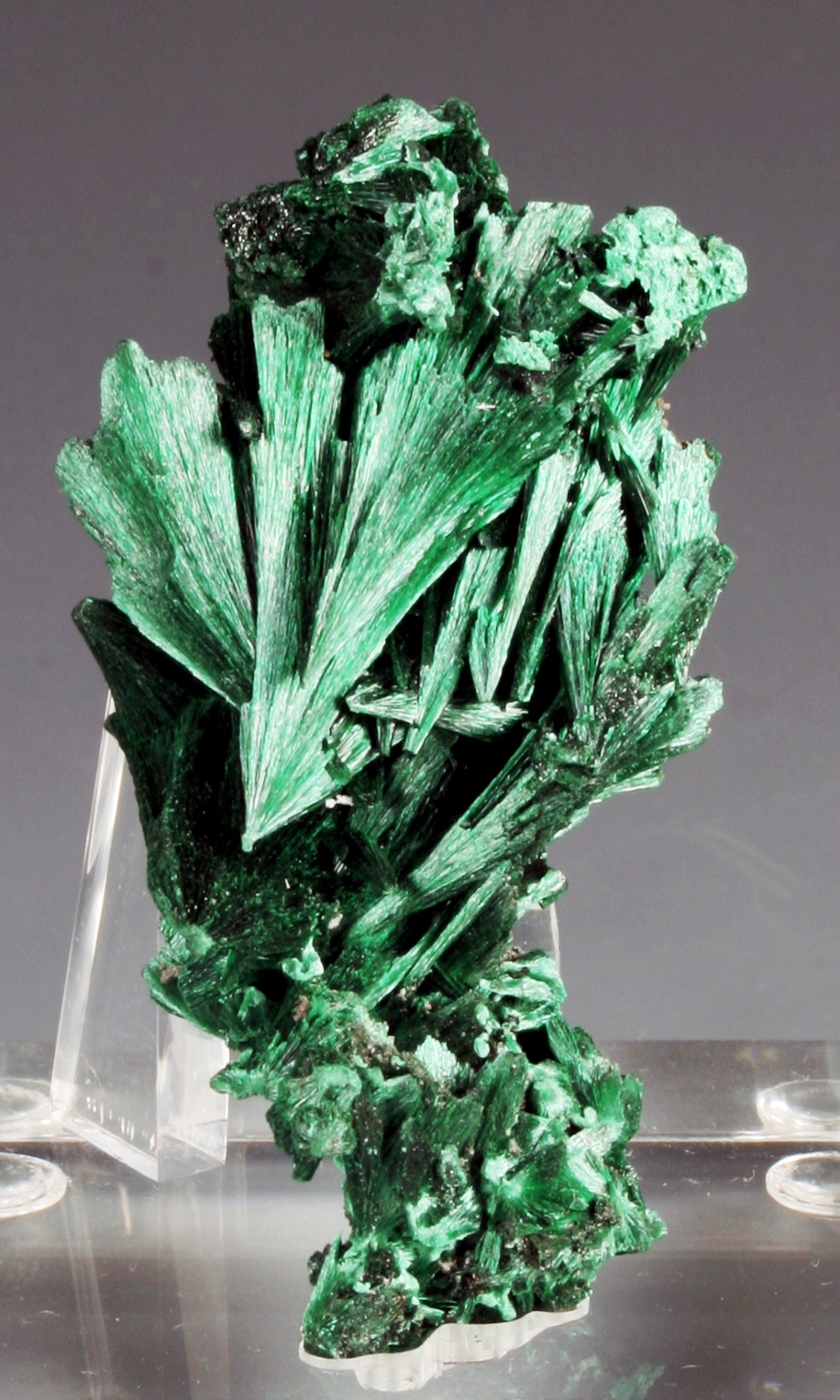Cuprite – copper’s striking oxidized mineral
Cuprite is an oxide mineral composed of copper oxide Cu2O, and is a minor ore of copper. Its dark crystals with red internal reflections are in the isometric system, hexoctahedral class, appearing as cubic, octahedral, or dodecahedral forms, or in combinations. Penetration twins frequently occur. In spite of its nice color it is rarely used for jewelry because of its low Mohs hardness of 3.5 to 4. It has a relatively high specific gravity of 6.1, imperfect cleavage and a brittle to conchoidal fracture. The luster is sub-metallic to brilliant adamantine.
It is a secondary mineral which forms in the oxidized zone of copper sulfide deposits. It frequently occurs in association with native copper, azurite, chrysocolla, malachite, tenorite and a variety of iron oxide minerals. It is known as ruby copper due to its distinctive red color.
Cuprite was first described in 1845 and the name derives from the Latin cuprum for its copper content. It can form both as bright transparent red crystals, and as lustrous, submetallic opaque crystals. Even the opaque form will have slightly red edges and slight transparency upon back-lighting. Malachite is known to fully or partially coat a layer or pseudomorph over Cuprite, forming an interestingly shaped and a sometimes sparkling green interesting mineral form.
Color: Bright-red, maroon, brownish-red, dark red, purplish-red, reddish-black, dark gray.
Crystal Forms: Usually in octahedral crystals or in groups of octahedral crystals, sometimes with modified cubic crystal edges. Less commonly cubic or in cubic clusters. Rarely in dodecahedral or modified dodecahedral form. Sometimes twinned as penetration twins, and occasionally in hopper growths. Also as masses of tiny elongated needles, capillary, fibrous, radiating, and massive. Commonly in a thin or encrusting coating upon Native Copper crystals. Crystals are often striated or have growth layers or patterns.
Chalcotrichite – Variety of Cuprite composed of dense, hair-like or needle-like fibers.
Localities: Some of the most outstanding lustrous dark red octahedral Cuprite crystals and groupings come from Kolwezi, Katanga (Shaba), Congo (Zaïre). Exceptionally large crystals, often coated with a shiny green coating of Malachite, are well-known from Ogonja, Seeis, Namibia; and a classic locality for fine Cuprite is Tsumeb, Namibia.
A relatively new Cuprite find producing outstanding lustrous dark gray octahedral crystal groupings is the Rubtsovoskoe Mine, near Poteryaevka, Altai, Russia. Cuprite crystals from this locality has become very popular among collectors. Fine sharp and lustrous octahedral Cuprite come from Dzezkazgan, Kazakhstan. In China, well-formed crystals and the Chalcocitrite variety have come from the Fengjiashan Mine, Daye, Hubei Province; and the Chengmenshan Mine, Jiurui, Jiangxi Province.
Bright cherry-red Cuprite crystals are well-known from the Red Dome Mine, Chillagoe, Queensland, Australia. Cornwall, England, is a classic producer, and this includes several localities in the Camborne/Redruth/St Day District; as well as Wheal Phoenix and Caradon, Linkinhorne, Liskeard District. In France, two noteworthy occurrences are Chessy, Rhône (especially noted for the Malachite pseudomorphs; and the Le Moulinal Mine, Paulinet.
In the United States, excellent Cuprite specimens have come from many of the important copper deposits of Arizona, with the most notable and classic being Bisbee, Cochise Co. Other noteworthy Arizona localities are Ray, Pinal Co., Arizona; and the New Cornelia Mine, Ajo, Pima Co.
Cuprite

Cuprite on native Copper, Bisbee, Cochise County, Arizona (BLM-19) $85.00 $85.00













